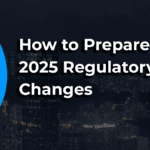
How to Build a Compliance Culture in Your Team
December 13, 2024
How to Prepare for 2025 Regulatory Changes
December 18, 2024Conducting a compliance risk assessment is essential for organizations to identify, evaluate, and mitigate potential risks that could lead to regulatory breaches or legal penalties. In Hong Kong, where the regulatory landscape is continually evolving, a structured approach to compliance risk assessment is crucial. This guide outlines the key steps involved in conducting an effective compliance risk assessment, tailored to the Hong Kong business environment.
Understanding Compliance Risk Assessment
A compliance risk assessment involves systematically identifying and analyzing potential compliance risks that an organization may face. This process helps in prioritizing risks based on their severity and likelihood, enabling organizations to allocate resources effectively to mitigate these risks. According to Deloitte, an effectively designed compliance risk assessment assists organizations in understanding the full range of their risk exposure, including the likelihood of occurrence and potential impact.
Steps to Conduct a Compliance Risk Assessment
Establish the Assessment Framework
Begin by defining the scope and objectives of the assessment. Determine which areas of the organization will be evaluated and identify the relevant regulatory requirements applicable in Hong Kong. This foundational step ensures that the assessment is comprehensive and aligned with the organization’s strategic goals.
Identify Compliance Obligations
Compile a list of all applicable laws, regulations, and internal policies that the organization must adhere to. In Hong Kong, this may include regulations from the Hong Kong Monetary Authority (HKMA), Securities and Futures Commission (SFC), and other relevant bodies. Staying informed about regulatory changes is crucial, as highlighted by Thomson Reuters’ Cost of Compliance 2022 report, which emphasizes the increasing complexity of compliance requirements.
Home
Determine Potential Risks
Assess how each compliance obligation could be breached within the organization’s operations. Consider factors such as operational processes, employee behavior, third-party interactions, and technological systems. Engaging various departments in this process ensures a thorough identification of potential risks.
Analyze and Prioritize Risks
Evaluate the likelihood and potential impact of each identified risk. This analysis helps in prioritizing risks, allowing the organization to focus on areas with the highest potential for compliance breaches. Tools such as risk matrices can be utilized to visualize and rank risks effectively.
Read more: Global Compliance: Adapting to the Changing Regulatory Landscape
Develop Mitigation Strategies
For each high-priority risk, formulate strategies to mitigate or manage the risk. This may involve implementing new controls, enhancing existing policies, conducting employee training, or investing in technology solutions. According to the Hong Kong Monetary Authority, adopting RegTech solutions can significantly enhance risk management and compliance efforts.
Hong Kong Monetary Authority
Implement and Monitor Controls
Put the mitigation strategies into action and establish monitoring mechanisms to ensure their effectiveness. Regular monitoring allows for timely identification of any issues and ensures that controls remain effective over time. Engaging external consultants for periodic reviews can provide an objective assessment of the compliance framework.
Review and Update the Assessment Regularly
Compliance risk assessments should not be a one-time activity. Regular reviews are necessary to account for changes in the regulatory environment, business operations, or emerging risks. Forbes recommends conducting compliance risk assessments annually or semi-annually to keep track of any changes in compliance standards and to identify gaps in compliance processes.
Forbes
Cost Considerations in Hong Kong
The cost of conducting a compliance risk assessment in Hong Kong can vary based on the organization’s size, complexity, and the scope of the assessment. Engaging external consultants may incur fees ranging from HKD 100,000 to HKD 500,000, depending on the depth of the assessment and the expertise required. Additionally, investing in compliance technologies, such as RegTech solutions, can involve initial setup costs and ongoing maintenance expenses. However, these investments are often justified by the enhanced efficiency and reduced risk of regulatory penalties.
Conclusion
Conducting a comprehensive compliance risk assessment is vital for organizations operating in Hong Kong’s dynamic regulatory environment. By following a structured approach, organizations can proactively identify and mitigate compliance risks, ensuring adherence to regulatory requirements and safeguarding their reputation. Regular updates to the risk assessment process are essential to adapt to evolving regulations and business landscapes.



